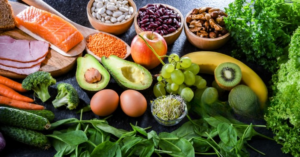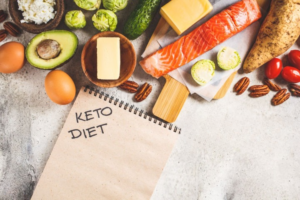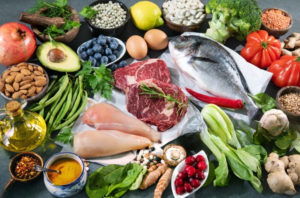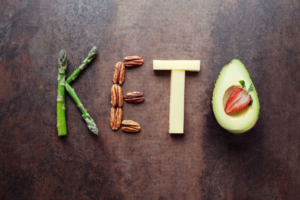The Keto Diet—Still Going Strong: 10 Secrets for Success
The ketogenic diet, also referred to as the “keto diet,” has become extremely popular in the nutrition industry. The diet was initially created to assist manage childhood epilepsy, but it has subsequently come to be associated with increased energy, weight loss, and better mental clarity. It is still a well-liked option for many people who want to improve their health, reduce body weight, or treat different medical issues. However, as its popularity has grown, so too have concerns about how to follow a ketogenic diet correctly. Is it really sustainable? Is it effective for everyone? And how can you get past the unavoidable difficulties, such as “keto flu” or staying in ketosis?
We’ll go deeply into the keto diet’s secrets, offer advice for sustained success, offer recipes, and describe how to deal with its typical problems in this extensive book. This book will help you get the most out of the high-fat, low-carb lifestyle, regardless of whether you’re just starting off or want to improve your keto experience.

1. Understanding the Keto Diet: How It Works
Before i start do not forget your gift click here
Fundamentally, the ketogenic diet calls for dramatically cutting back on carbohydrates and substituting them with fat. When you do this, your body goes into a metabolic condition known as ketosis, which makes it extremely effective at burning fat for energy. Your liver creates ketones, which are chemicals that give your body and brain energy when glucose is no longer accessible for use as fuel.
Many of the praised advantages of the ketogenic diet are provided by this shift from glucose-based energy to fat-burning. It’s the reason why people frequently lose weight quickly in the beginning, but there are other reasons to think about following a ketogenic diet. Improved blood sugar regulation, decreased appetite, and increased mental clarity have all been associated with the diet.
2. Secret #1: Make Fat Your Friend
-
Avocados:
Rich in heart-healthy monounsaturated fats.
-
Olive oil:
A staple in the Mediterranean diet, known for its anti-inflammatory properties.
-
Coconut oil:
Contains medium-chain triglycerides (MCTs), which can boost ketone production.
-
Fatty fish:
Salmon, mackerel, and sardines provide omega-3 fatty acids, essential for brain and heart health.
In addition to keeping you in ketosis, healthy fats also help you feel full and content, which makes it simpler to maintain the diet over time.

3. Secret #2: Get Creative with Low-Carb Vegetables
One of the common misconceptions about keto is that it’s all about bacon, cheese, and butter. While those foods are certainly keto-friendly, a balanced keto diet includes plenty of low-carb vegetables as well. These veggies provide essential vitamins, minerals, and fiber, helping to maintain gut health and overall well-being.
Focus on non-starchy vegetables like:
- Spinach, kale, and other leafy greens
- Cauliflower (a great substitute for rice and potatoes)
- Zucchini (spiralize it for keto-friendly noodles)
- Broccoli and Brussels sprouts
By incorporating a variety of vegetables, you not only improve your nutrient intake but also add volume and flavor to your meals without spiking your carbohydrate count. (see in Wikipedia)
4. Secret #3: Track Your Macros
The keto diet requires careful attention to macronutrients—fats, proteins, and carbohydrates. Most keto practitioners aim for a macronutrient ratio that looks something like this:
- 70-75% fats
- 20-25% proteins
- 5-10% carbohydrates
Tracking your macros ensures that you’re eating the right amounts of fats, proteins, and carbs to stay in ketosis. While this can feel tedious at first, there are plenty of apps and tools available to make it easier. As you become more familiar with portion sizes and nutrient content, tracking will become second nature.
5. Secret #4: Conquer the “Keto Flu”
One of the most notorious challenges for beginners is the keto flu—a collection of symptoms like headaches, fatigue, irritability, and brain fog that can occur when transitioning from a high-carb to a low-carb diet. The good news is that keto flu is temporary, usually lasting just a few days to a week. But there are ways to minimize its impact.
- Stay hydrated:
As you lose glycogen, your body excretes more water, so it’s important to drink plenty of fluids.
- Replenish electrolytes:
You lose key electrolytes like sodium, magnesium, and potassium when starting keto. Add extra salt to your meals or consider an electrolyte supplement.
- Ease into it:
If the symptoms are too intense, consider gradually reducing your carb intake instead of going cold turkey.
The keto flu is a sign that your body is adapting to its new energy source, and once you push through, you’ll likely experience the benefits of ketosis.

6. Secret #5: Stay in Ketosis by Monitoring Ketone Levels
To truly reap the benefits of the keto diet, it’s crucial to stay in ketosis. How do you know if you’re in this fat-burning state? The best way is to measure your ketone levels. There are several methods to do this, including urine strips, blood ketone meters, and breath meters. Blood ketone meters are considered the most accurate.
Tracking your ketones helps you understand how different foods, exercise, and fasting impact your ketosis levels. It can also motivate you to stay consistent, knowing that your body is running on fat rather than carbs.
7. Secret #6: Plan Ahead for Success
To be successful on the ketogenic diet, especially in the beginning, meal planning is crucial. You must prepare your meals and snacks ahead of time to prevent lapses because the diet limits a lot of conventional staples, such as bread, pasta, and grains. Here are some tips to help you with meal prep:
Batch cooking: Make big quantities of keto-friendly dishes that you can consume all week long, such as stews, soups, and casseroles.
Keep your pantry stocked: To make meal preparation faster, keep keto essentials like almond flour, coconut flour, olive oil, and low-carb snacks on hand.
Prepare for social events: Bring your own keto-friendly food or look over menus in advance if you’re going to a gathering or eating out. You’ll be less likely to reach for non-keto options when hunger strikes.
8. Secret #7: Overcoming Common Keto Challenges
The keto diet comes with its challenges, but they’re not insurmountable. Here’s how to navigate some of the most common issues:
- Cravings for carbs: It’s normal to crave carbs in the beginning. Combat this by incorporating plenty of fat into your meals to stay full and satisfied. Over time, many people find that carb cravings diminish as they become more fat-adapted.
- Social pressure: Friends and family may not understand your dietary choices, especially if they revolve around carb-heavy meals. Be prepared to explain why you’re doing keto and stick to your plan. You can also find support in keto communities online or in-person.
- Hitting a plateau: If your weight loss stalls, re-evaluate your macros, check your ketone levels, and consider incorporating intermittent fasting to kick-start your progress again.
9. Secret #8: Keto-Friendly Recipes for Every Meal
One of the keys to long-term success on keto is having a variety of delicious, satisfying recipes that keep you excited about your meals. Here are a few simple, keto-friendly ideas for every meal of the day:
Breakfast: Keto Avocado and Bacon Omelette
Ingredients:
- 2 eggs
- ½ avocado, diced
- 2 slices of bacon, cooked and crumbled
- Salt and pepper to taste Instructions:
- Whisk the eggs in a bowl and pour them into a heated skillet.
- Add the avocado and bacon crumbles as the eggs begin to set.
- Fold the omelette in half, season with salt and pepper, and enjoy.

Lunch: Grilled Chicken Salad with Olive Oil and Avocado
Do not forget your gift click here
Ingredients:
- 1 grilled chicken breast, sliced
- 2 cups mixed greens
- ½ avocado, sliced
- 2 tablespoons olive oil
- Salt and pepper to taste Instructions:
- Combine the greens, chicken, and avocado in a large bowl.
- Drizzle with olive oil and season with salt and pepper.
Dinner: Keto-Friendly Cauliflower Crust Pizza
Ingredients:
- 1 head of cauliflower, grated
- 1 cup mozzarella cheese
- 1 egg
- Keto-friendly pizza sauce
- Toppings: pepperoni, mushrooms, spinach, etc. Instructions:
- Preheat your oven to 400°F (200°C). Mix the cauliflower, cheese, and egg to form a dough.
- Spread the dough onto a baking sheet and bake for 20 minutes.
- Add pizza sauce and your favorite toppings, then bake for an additional 10 minutes.

10. Why the Keto Diet is Here to Stay
The keto diet has transcended the label of a “fad” because it offers real, tangible results. For many, it’s more than just a short-term solution—it’s a sustainable way to improve metabolic health, lose weight, and enhance cognitive performance. The ability to customize the diet to fit individual needs, combined with growing scientific research backing its benefits, ensures that keto will remain a popular choice for years to come.
While keto isn’t for everyone